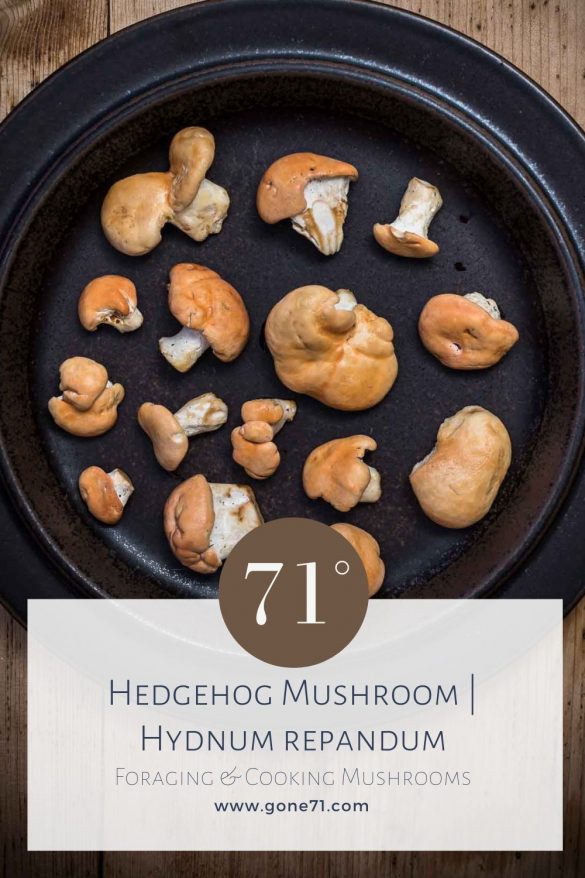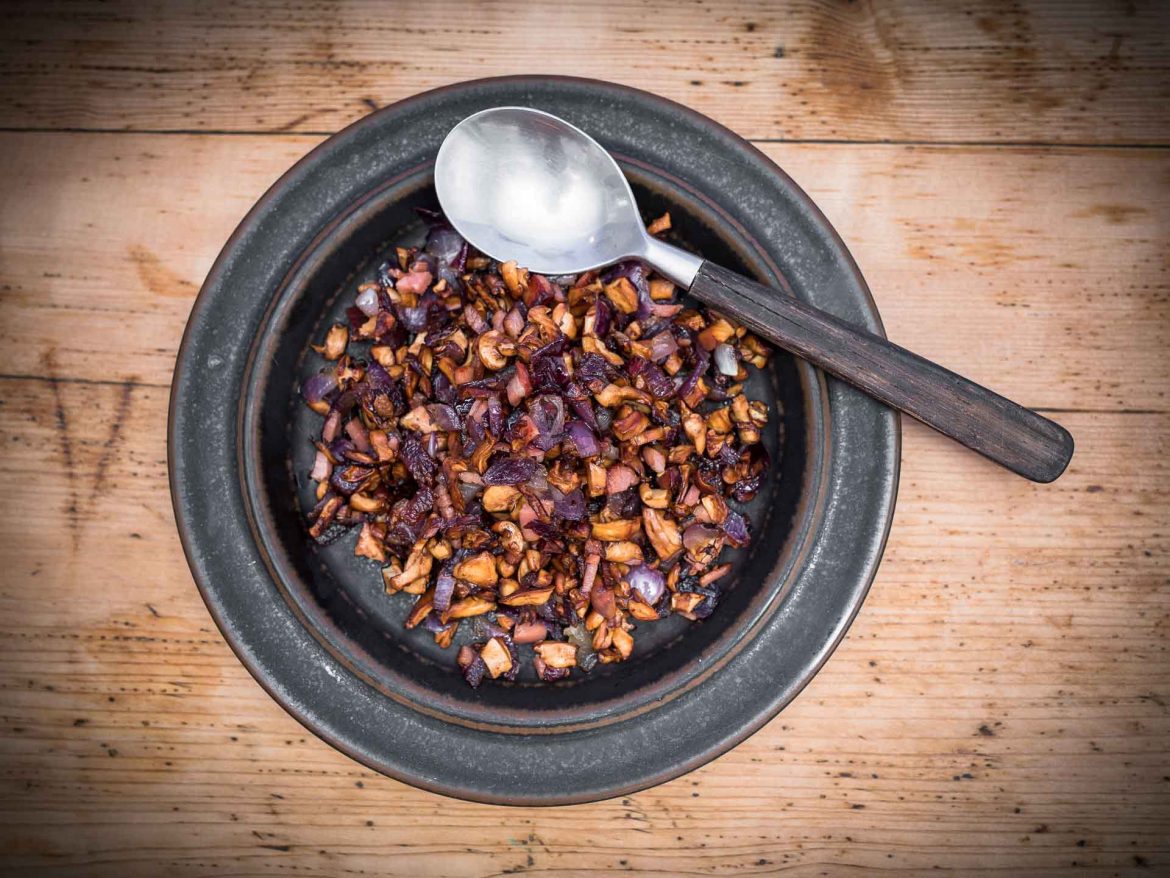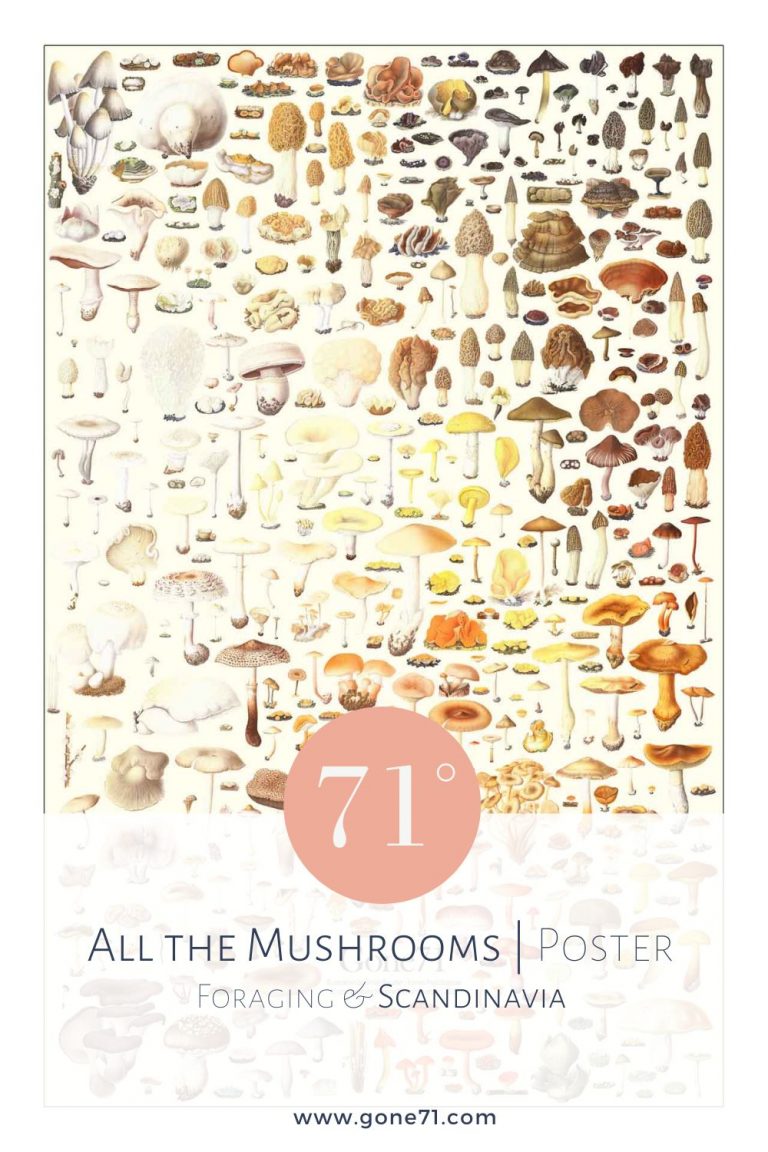syn.: Sweet Tooth | swe.: Blek taggsvamp | nor.: Bleik piggsopp | fin.: Vaaleaorakas | dt.: Semmelstoppelpilz
The hedgehog mushroom is an easily recognizable and common mushroom across much of Europe. Its prickly underside clearly distinguishes it from at first glance similar mushrooms such as chanterelle (Cantharellus cibarius). In autumn hedgehog mushrooms often appear en masse, and since most of the mushroom pickers ignore these light yellow forest dwellers, the foraging pressure is quite low compared to other species.
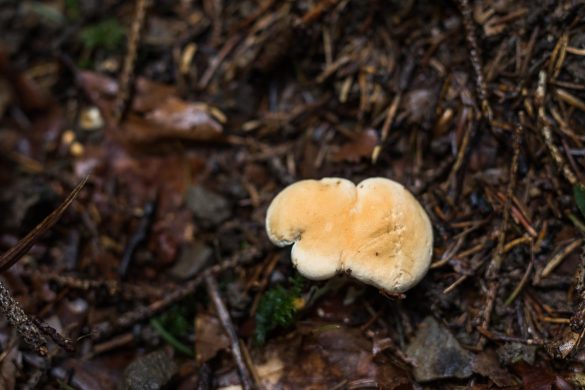
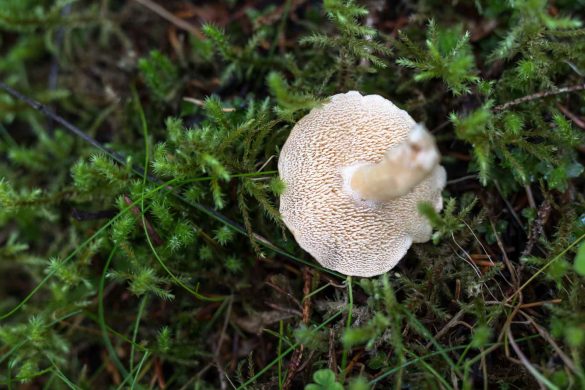
Appearance & habitat of the hedgehog mushroom
hat: 4 – 15 cm
months: June – November
colours: yellowish-white stem, light yellow cap
characteristic: white parts turn yellow uppon pressure, spines instead of gills
habitat: mixed forest
taste: mild, slightly bitter in older specimen
smell: pleasant, fruity
Mixed forests are the preferred habitat. Its reputation as a not very desirable edible mushroom is largely due to its somewhat idiosyncratic appearance. Its spiny underside can be a bit irritating for the aesthetic sense. We usually associate edible mushrooms with lamellae or pores – spines are difficult to reconcile with this classification.
A certain visual resemblance to chanterelles that can appear at first glance can also be found on the culinary level. Both the smell and the slightly peppery taste offer certain similarities. When cooked, the hedgehog mushroom has a milder taste and, in our opinion, can be used in a variety of ways. Its firm consistency makes it the ideal protagonist for various dishes.
Lookalikes
Hedgehog mushrooms are one of the few mushrooms that do not have any poisonous doppelgangers. They are easy to identify, making them great for inexperienced mushroom pickers. Often it is confused with other varieties such as the white hedgehog mushroom (Hydnum repandum var. Albidum) or the depressed hedgehog (Hydnum umbilicatum). But since all of these species are edible, there is no danger here.
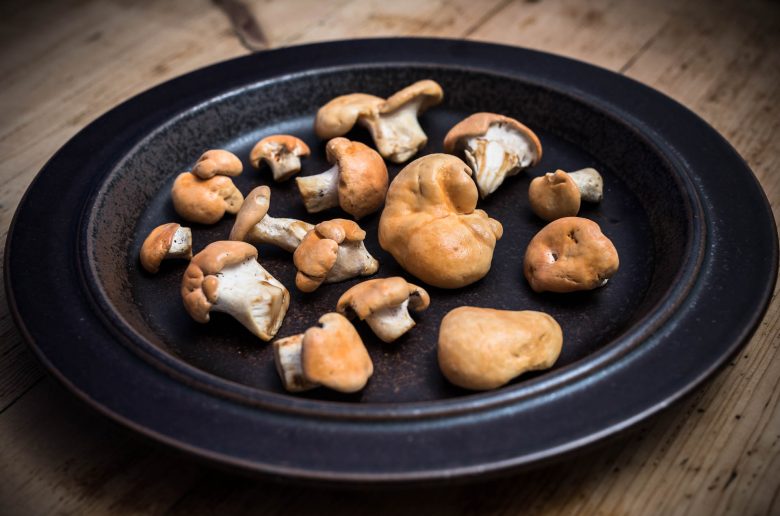
In the kitchen
Most of our mushroom-loving friends and family turn up their noses at the name hedgehog mushroom. For reasons we don’t quite understand, this mushroom doesn’t have a particularly good reputation and really rarely ends up in most mushroom baskets. One reason could really be its mushroom-atypical appearance that scares many. Of course we also prefer porcini or caesars mushroom but since these are rare or very seasonal, hedgehog mushrooms can be a welcome alternative.
Like many other mushrooms, we often just fry the hedgehog mushroom until crispy. If you like, you can refine the whole thing with onions and eggs.
Harvest young specimen
We try to harvest only the young specimen where the spines are relatively short. At an older stage, they tend to be bitter. This fact is already pointed out in very old cookbooks, whereby the hedgehog mushroom has been considered a good edible mushroom for centuries.
Cleaning
The spikes on the bottom can be easily removed with a knife. They contain most of the bitter substances and are often unsightly in the food.
Cooking
Their firm consistency makes hedgehog mushrooms excellent fried mushrooms.
Pickle
(Small) hedgehog mushrooms can also be pickled very well.

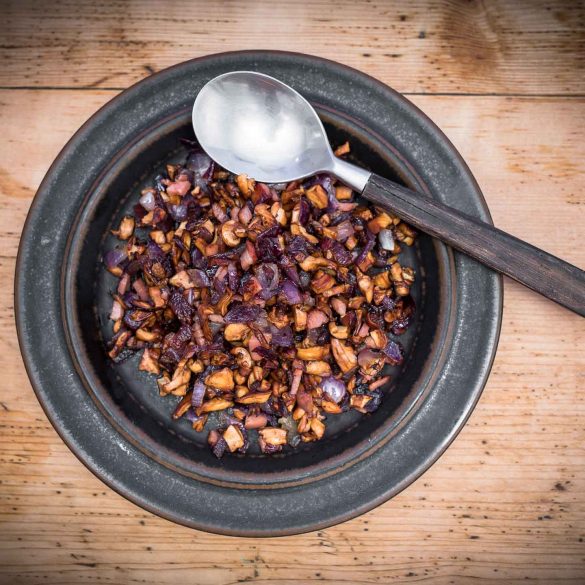
Ingredients
- 2 red onions
- 400 g hedgehog mushrooms
- olive oil
- salt, pepper
- green lettuce & dressing of choice
Instructions
Clean the mushrooms well
Cut into small cubes and set aside
Finely chop the onion Put olive oil in a pan and sauté onions briefly
After 1 to 2 minutes add the mushrooms and sauté together until the mushrooms are slightly crispy.
Season with salt and pepper.
With green salt and fresh bread.
Notes
We like to serve the salad with typical Austrian pumpkin seed oil.
Learn more about poisonous mushrooms and mushroom poisons here
↓↓↓
Find some inspiration in other mushroom recipes
↓↓↓
